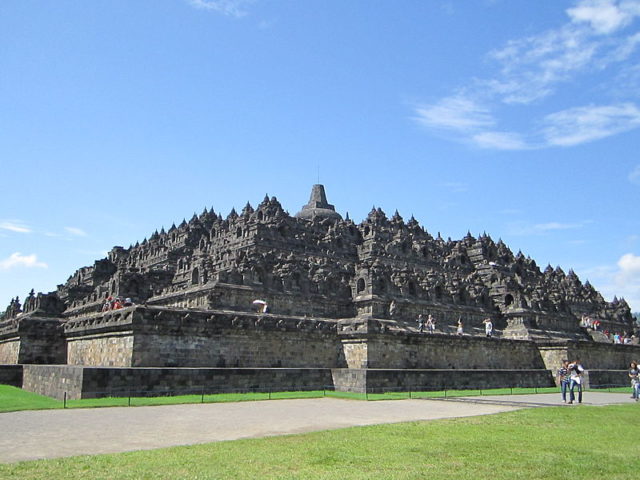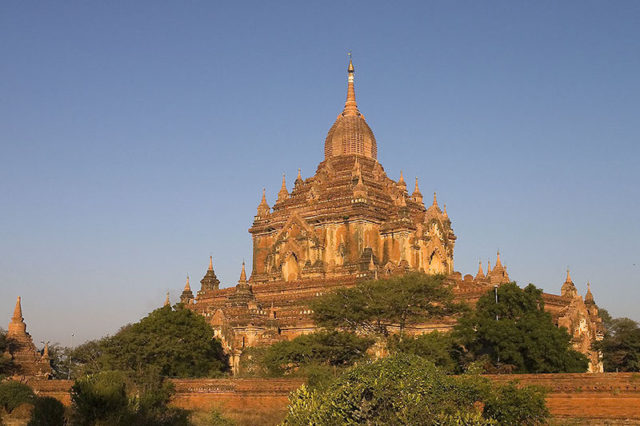Let me take you back to a time of conquest, conversions, and construction. Nearly 1,000 years ago, the rulers of Bagan built more than 10,000 beautiful religious monuments in less than 250 years. It was a construction project unlike anything before it.
The temples, monasteries, and stupas became the defining part of Bagan, the capital of the Pagan Empire that ruled Myanmar from 1044 to 1287.
On August 17, many of these gorgeous monuments were damaged after a 6.8 magnitude earthquake struck. This is very upsetting seeing as only 2,200 of these monuments remain today. Most of the damage happened to more modern material that was used by the former military rulers of Myanmar, with little regard for the original architecture, to restore the temples.
The man who unified the country formerly known as Burma was King Anawratha; he and his successors built these temples in a frenzy, hoping their construction would bring them spiritual luck. Even after doing so it did not stop them from waging war or killing to gain success.
Another king by the name of Narathu, killed his father, brother and his one of his own wives, he then killed the architect of the Dhammayangi temple so that it could never be duplicated. He also liked to chop off the hands of sloppy workmen.

As more monuments were built on the plains of central Myanmar, Bagan became the center of everything in the empire. It was both a religious and scientific center where people studied many things, including astrology, law, philosophy, medicine and Pali, the language of Buddhist scriptures. It also became the destination for monks from as far away as Sri Lanka, Cambodia, and India. However, the jewel of the Bagan empire fell just as quickly as it rose.
In 1287, the city was mostly abandoned, though the reasons are not clear why. The city was once home to 200,000 people, but it had been turned into a ghost town. Some accounts say it was due to Mongol invasions, but some say that the Mongols never even got to the city.
Thankfully though, the city left a legacy that future generations are benefitting from.
The city of Bagan covers more than 32 square miles (80 square km) of flat plain lands. It is actually the country’s biggest tourist attraction, an along with Indonesia’s Borobudur temple and Cambodia’s Angkor Wat, the temples of Bagan are Southeast Asia’s historical landmarks

Unlike those other sites, Bagan is not on the World Heritage Site by UNESCO due to it being neglected in recent times and its horrible restoration job in the 1990s.
When the earthquake hit Bagan recently, it loosened bricks, cracked the mortar, and dislodged spires, revealing the modern renovations that were done by the former military regime.
These restorations caused UNESCO to condemn and deny Bagan the World Heritage Site Stamp, even after it had already stated that: “these monuments represent the outstanding artistic and technical achievement of an original and innovative Buddhist school of art.”

The blame rests on the Junta that took over in 1988 after they crushed a pro-democracy movement. In 1995 the restoration was in full swing; the military government had hoped to complete the work before the Visit Myanmar Year in 1996, believing that it would bring in much-needed tourist income.
The plan had very little success, this was due to underdeveloped infrastructure and a boycott that was called by human rights groups against the regime. These boycotts took place after the regime placed pro-democracy leader Aung San Suu Kyi under arrest. Thankfully, the country overthrew military rule this year and is now being led by Suu Kyi’s party, making him the de facto leader.
Pierre Pichard, a UNESCO consultant who had long been associated with Bagan, said that instead of cultural history being the priority it was the former regimes’ goal to impress visiting which dictated restoration while military-ordered excavation has been done “hastily, without proper preparation and without the requested scientific methodology and records.”
UNESCO was even more upset when they decided to build a 198-feet (60-meter) tall viewing tower in 2005, saying it was too big and took away from the original monuments.
The State tourism authorities said that it would stop tourists from climbing on ancient and weak structures, and that hopefully, this would keep them standing much longer.
